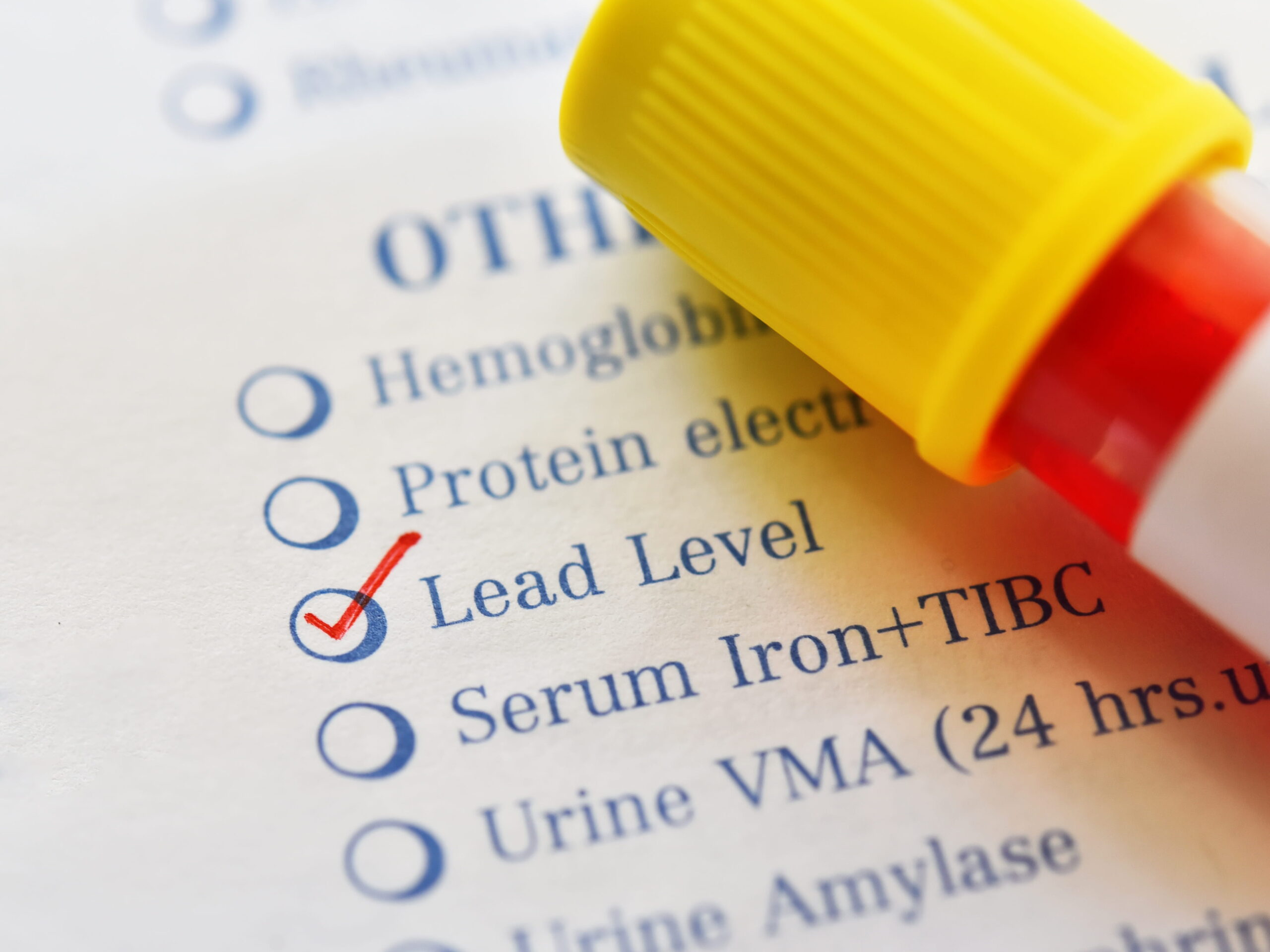Lead Poisoning
Low levels of lead can be found in the soil, the air, the water, and on things we touch. Most often, lead from these sources isn’t cause for concern, but when higher levels are present, it can be very harmful, especially to young children.
A lead-poisoned child may have learning and behavior problems, slowed growth and development, hearing and speech problems, headaches, weight loss, constipation, irritability, tiredness, hyperactivity, and even damage to the brain and nervous system. These problems can lead to lower IQ, decreased ability to pay attention and underperformance in school.

The majority of children with lead poisoning live in or spend a lot of time in a home built before 1978. Lead can be found in an older home’s drinking water if it is supplied with lead pipes and plumbing fixtures. However, the culprit is usually lead-based paint, which was commonly used in homes built before 1978. The older the home, the more likely it is to contain lead.
The most common places for lead-based paint to be lurking are in an older home’s windows, cupboards, doors, porches, and outdoor surfaces. Something as simple as opening and closing a window painted with lead-based paint can send lead dust into the air. The dust then settles to the floor and gets on children’s hands and toys, and eventually makes its way into the mouth.
Lead can be found in other places, too, like in some plastic mini blinds made outside of the United States and in some toys and toy jewelry. Certain hobbies and jobs that involve working with lead-based products can also pose a danger if the dust is brought into the home on clothing, shoes, hair or skin.
What can you do to reduce your child’s exposure to lead if you live in an older home?
Test.
Get your young child tested for lead at one and two years of age, even if he seems healthy. Private insurance coverage varies, but if your child is enrolled in Medicaid, the test will be covered.
Mid-Michigan District Health Department offers lead blood tests to children enrolled in the Women, Infants and Children (WIC) program. For more information, call:
› Clinton County: 989-224-2195
› Gratiot County: 989-875-3681
› Montcalm County: 989-831-5237
Inspect.
Before you buy an older home, ask for a lead inspection and be sure to have the water tested. If you live in an older home, renovate safely. Common activities like sanding, cutting and replacing windows can create hazardous lead dust. If you’re planning on renovating an older home, have your home tested and use contractors certified by the Environmental Protection Agency.
Be aware.
Make sure your child doesn’t eat paint chips, dust or dirt. Keep dust and dirt off floors, window sills and other surfaces.
Run Your Water.
Running water for drinking or cooking for 15 to 30 seconds, especially if it hasn’t been used for six hours or more can reduce the risk of Lead Exposure.
What precautions should all parents take to reduce your child’s exposure to lead?
• Get your child tested for lead at one and two years of age, even if they seem healthy. Private insurance coverage varies, but if your child is enrolled in Medicaid, the test will be covered.
Mid-Michigan District Health Department offers lead blood tests to children enrolled in the Women, Infants and Children (WIC) program. For more information, call:
› Clinton County: 989-224-2195
› Gratiot County: 989-875-3681
› Montcalm County: 989-831-5237
• Replace plastic mini blinds with a type that is lead-free.
• If you work around lead, avoid bringing lead dust into your home.
• Don’t store food in open cans.
• Have your child wash his hands after playing outside, before meals and bedtime.
• Wash your child’s toys often.
• Stay up-to-date on current recalls by visiting the Consumer Product Safety Commission’s website at www.cpsc.gov and remove recalled toys and toy jewelry as appropriate.
• Give your child a diet rich in calcium, vitamin C and iron. These foods can help keep lead from getting into the bones and blood.
